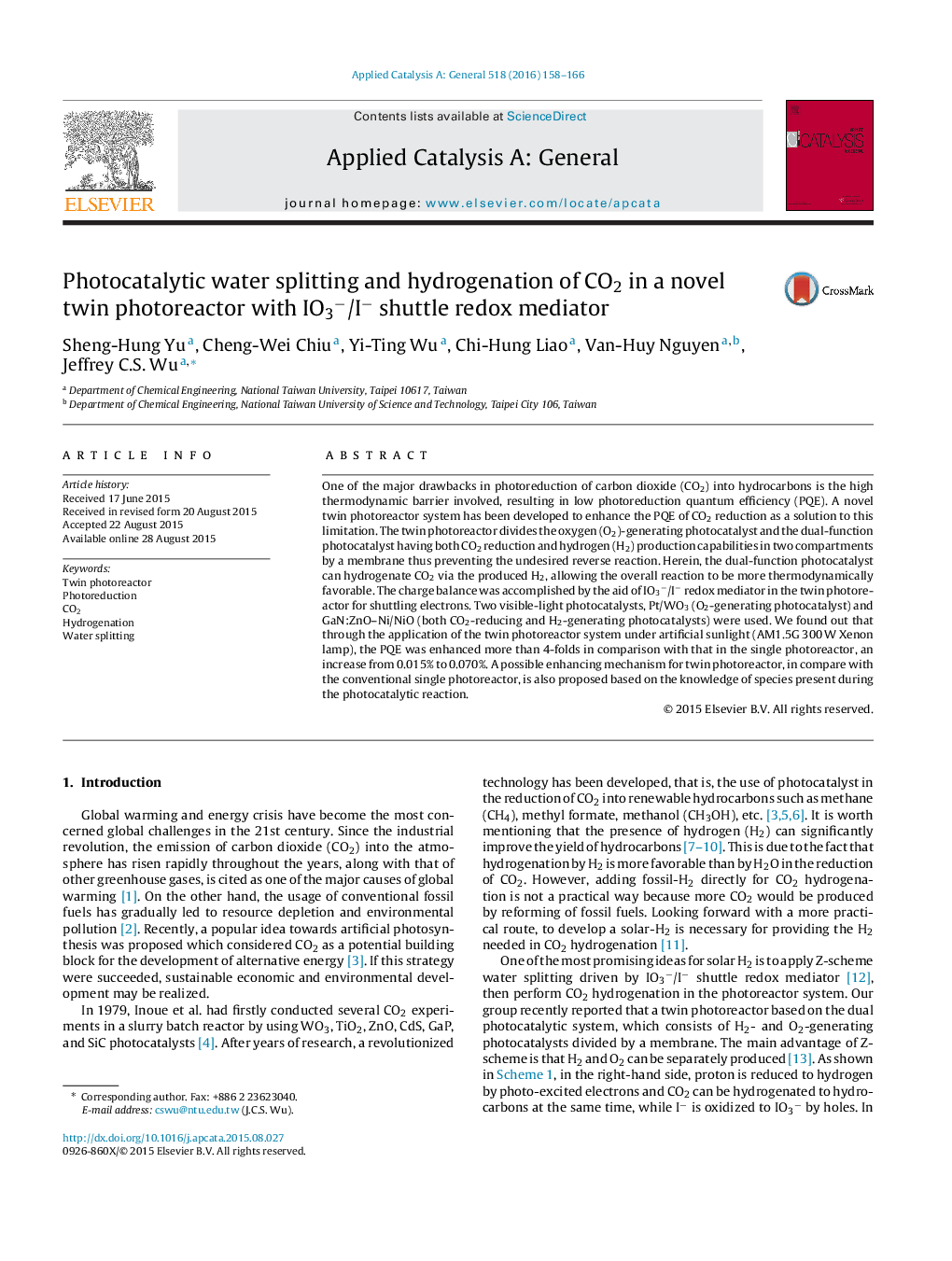| Article ID | Journal | Published Year | Pages | File Type |
|---|---|---|---|---|
| 38998 | Applied Catalysis A: General | 2016 | 9 Pages |
•A twin photoreactor system improves significantly the photo quantum efficiency.•GaN:ZnO–Ni/NiO hydrogenates CO2 via the H2-generating from water splitting.•Pt/WO3, known as the O2-generating photocatalyst, produces O2 simultaneously.•The charge balance is accomplished by the aid of IO3−/I− redox mediator.
One of the major drawbacks in photoreduction of carbon dioxide (CO2) into hydrocarbons is the high thermodynamic barrier involved, resulting in low photoreduction quantum efficiency (PQE). A novel twin photoreactor system has been developed to enhance the PQE of CO2 reduction as a solution to this limitation. The twin photoreactor divides the oxygen (O2)-generating photocatalyst and the dual-function photocatalyst having both CO2 reduction and hydrogen (H2) production capabilities in two compartments by a membrane thus preventing the undesired reverse reaction. Herein, the dual-function photocatalyst can hydrogenate CO2 via the produced H2, allowing the overall reaction to be more thermodynamically favorable. The charge balance was accomplished by the aid of IO3−/I− redox mediator in the twin photoreactor for shuttling electrons. Two visible-light photocatalysts, Pt/WO3 (O2-generating photocatalyst) and GaN:ZnO–Ni/NiO (both CO2-reducing and H2-generating photocatalysts) were used. We found out that through the application of the twin photoreactor system under artificial sunlight (AM1.5G 300 W Xenon lamp), the PQE was enhanced more than 4-folds in comparison with that in the single photoreactor, an increase from 0.015% to 0.070%. A possible enhancing mechanism for twin photoreactor, in compare with the conventional single photoreactor, is also proposed based on the knowledge of species present during the photocatalytic reaction.
Graphical abstractFigure optionsDownload full-size imageDownload high-quality image (198 K)Download as PowerPoint slide
